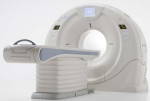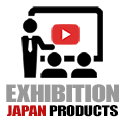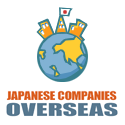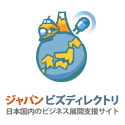Ningen Dock: Japanese-Style Health Examinations

Taking Stock of the Ningen Dock
Date: June, 2010
Source: Highlighting Japan – By Miho Kawasaki
Japan has widely used a system for medical checkup known as the “Ningen Dock”. Dr. Minoru Yamakado, a board member of the Japan Society of Ningen Dock, talks about the Ningen Dock and what it involves.
What the Ningen Dock checkup? And when did this system for medical checkup start?
Dr. Minoru Yamakado: The Ningen Dock as a system of medical checkup is peculiar to Japan. Over the course of one or two days, clients undergo a series of exams, such as blood exams, urine and fecal exams, X-rays and ultrasonography, as well as a consultation with a doctor to talk about his or her lifestyle habits and medical history. Later that day, after the exams have finished, the doctor explains the results to the client in an interview, and gives lifestyle advice on how the client can maintain their health. One feature of the Ningen Dock is that it emphasizes both the consultation and the post-examination interview. The Ningen Dock started in 1954, as a “Ward for Detailed Medical Checkup Requiring Short-Term Hospitalization” in the First National Tokyo Hospital [now the National Center for Global Health and Medicine]. At the time, the medical checkup involved six days and five nights in hospital. This medical checkup gained popularity and the Yomiuri shinbun newspaper, comparing the process to the maintenance that a ship undergoes after a sea voyage, described it as the Ningen Dock, by which name it is commonly known today.
The Ningen Dock has now become an essential part of the way that Japanese people maintain their health, with about three million people receiving the Ningen Dock at about 1,500 medical institutions around the country. Key factors behind the spread of this system are the fact that many Japanese companies subsidize the Ningen Dock for their employees to ensure their continuing good health, and the fact that as people have become more affluent since the period of high economic growth which started in the latter half of the 1950’s, they have also become more health-conscious.
What role does the Ningen Dock play in maintaining good health?
The Ningen Dock can discover various diseases, but one major objective is the early detection of cancer, which is the leading cause of death in Japan. There is also an emphasis on using various tests to obtain a detailed understanding of a client’s current medical condition and using consultations to check the medical histories of close relatives so that the disease risks that a client faces can be identified and doctors can give lifestyle advice.
At the hospital where I work the oldest patient receiving the annual Ningen Dock is now ninety years old, but she is in exceptionally good health, with absolutely no sign of any deterioration in her annual results. Clients who undergo the Ningen Dock consistently even in their seventies or 1980’s often look young for their age. I suspect that undergoing the annual Ningen Dock makes people more aware of their physical condition, helping them to maintain their health which then has the effect of slowing down the aging process. The Ningen Dock can be thought of as an investment in maintaining good health.
How has the technology used in the Ningen Dock progressed over the years?
By combining X-rays with computed tomography (CT), even quite early small cancers can now be detected. The rate of cancer detection is double that when only X-rays are used. In recent years, there has also been a focus on PET scans as well. Statistics indicate that cancers are detected in 0.24% of the clients who receive PET scans.
MR scans are used in the brain dock, and lesions of brain disease are found in about 2% of clients. Brain disease often develops suddenly, before patients have subjective symptoms, and so detecting signs at an early stage makes proper prevention possible.
As a doctor, one thing I have really noticed about the progress of technology is that the quality of the images which we get back from the exams has improved enormously. Once upon a time X-ray images were recorded on photographic film, which had to be developed before we could view them, but now we can make diagnoses based on crystal clear images that have been digitally processed by a computer. This allows clients with no medical knowledge to see instantly where the problem is, which is very useful in the post-ex-animation interview.
Could the Ningen Dock system be adopted overseas?
In 2006, the International Society of Ningen Dock was established and the World Congress on Ningen Dock held in Okinawa with the goal of “making the Ningen Dock a common term all around the world”. Many overseas doctors have participated in the congress, particularly from countries in East Asia, such as Taiwan, China and Korea.
In recent years, there has also been an increase in the number of tourists coming to Japan to receive the Ningen Dock. The demand for this kind of “medical tourism,” which combines medical services with more traditional tourism options such as visiting hot springs or famous sightseeing places, might increase even further in future. For foreigners and Westerners in particular, the normal values for test results such as the blood levels of cholesterol and triglycerides are not the same as the normal values for Japanese people. As doctors, we need to conduct the medical checkup with a thorough understanding of these physical differences. I also think that we will need to make further progress in creating systems for communicating properly with foreign clients, to take full advantage of the consultation and interview processes, which are two of the strengths of the Ningen Dock.









